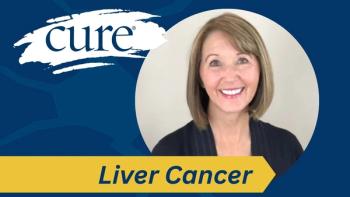
Choosing the Best Therapy for Patients with Chronic Lymphocytic Leukemia
With many targeted treatment options for patients with CLL to use upfront, the question arises as to which one is best for the individual.
Patients with chronic lymphocytic leukemia (CLL) have great front-line treatment options, but which therapy works best for each patient? That’s the question many health care professionals now face, explained Dr. Jennifer A. Woyach.
Targeted therapies, such as Imbruvica (ibrutinib), Calquence (acalabrutinib) and Venclexta (venetoclax) plus Gazyva (obinutuzumab), have been approved by the Food and Drug Administration (FDA) and have shown to keep patients in remission or reduce the risk of disease progression or death.
“The most recent study is the ELEVATE-TN study, which led to the approval of acalabrutinib,” Woyach, an associate professor at The Ohio State University Comprehensive Cancer Center—James, said in an interview with OncLive®, a sister publication of CURE®. “That study was (Leukeran [chlorambucil])/obinutuzumab versus acalabrutinib alone versus acalabrutinib plus obinutuzumab. Acalabrutinib and acalabrutinib/obinutuzumab had significantly improved (progression free survival [PFS]) with about a 90% two-year PFS rate.”
In addition to using these medications alone, researchers are studying their use in combination with other drugs, such as Venclexta with Imbruvica, a type of Bruton’s tyrosine kinase (BTK) inhibitor. BTK inhibitors work by keeping the cancer cells from growing and have shown great results in
“One study looked at combining venetoclax with the BTK inhibitor (Imbruvica) to see if you can both capitalize on the efficacy of the two agents, and then potentially get patients into such deep remissions that they can come off therapy,” she said. “At the 2019 ASH Annual Meeting, we had the follow-up of The University of Texas MD Anderson Cancer Center study in both the frontline and relapsed/refractory settings, in which the majority of patients are getting minimal residual disease-negative responses. There are a lot of complete responses with fairly limited follow-up off treatment. Most patients are still in remission.”
Side effect profile and patient preference can be used to help guide oncologists on which treatment is best to start with, Woyach explained. “We have the discussion for patients who are very high-risk, meaning those with TP53 mutations or 17p deletions,” she said. “The data with the BTK inhibitors looks a little bit stronger compared with that fixed duration of venetoclax/obinutuzumab. For those patients, I'm still trying to steer them towards the BTK inhibitor; however, it's not wrong to (give) venetoclax/obinutuzumab to those patients either.”
Imbruvica has the stronger safety and efficacy data, Woyach added. However, with longer follow-up, Imbruvica has more side effects, such as hypertension; bleeding risk; and atrial fibrillation (AFib), or an irregular heartbeat, which has been seen in 10% to 15% of patients, generally those who are older. In addition, arthralgia, myalgia, diarrhea, bruising and gastrointestinal issues can also been experience by patients treated with Imbruvica.
Although patients have to take
Overall, these therapies continue to show great promise, but if a patient relapses or becomes resistant to therapy, Woyach explained that reversible BTK inhibitors are in development. “A few of those reversible molecules (were presented) at the 2019 ASH Annual Meeting and showed very interesting efficacy; these included ARQ 531 and LOXO-305,” she said.
This article was adapted from an article that originally appeared on OncLive, titled “




